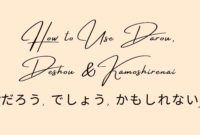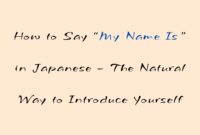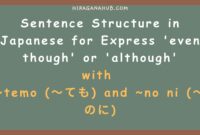Discussing the Negative Forms of Adjectives in Japanese
Learning Japanese involves more than just understanding positive adjectives.
It’s equally important to grasp how to express adjectives in their negative
forms. This article will explore the negative forms of adjectives in Japanese,
using different sentence patterns for -na and
-i adjectives. Let’s dive in!
>> Negative Sentence Patterns for -na Adjectives
For -na adjectives, the common negative sentence pattern used
is:
Noun + は + Adjective (な) + じゃあ / では + ありません (arimasen)
However, in everyday conversation, it is often shortened to
じゃない (janai) or ではない (dewa nai).
Structure:
- Noun + は + Adjective + じゃあ / では + ありません

Example Sentences with –な (na) Adjectives in Negative Form
Here are three example sentences using -na adjectives in
their negative forms:
-
がっこうはしずかじゃありません (Gakkou wa shizuka ja arimasen): The school is not quiet.
-
へやはきれいではありません (Heya wa kirei de wa arimasen): The room is not clean.
-
ともだちはしんせつじゃありません (Tomodachi wa shinsetsu ja arimasen): The friend is not kind.
>> Negative Sentence Patterns for -i Adjectives
For -i adjectives, the negative form is changed to
-くない (kunai) before ending with
です (desu).
Structure:
- Noun + は + Adjective (い) + くないです
Example Sentences with -i Adjectives in Negative Form
Here are three example sentences using -i adjectives in their
negative forms:
-
てんきはよくないです (Tenki wa yokunai desu):
The weather is not good. -
ほんはおもしろくないです (Hon wa omoshirokunai desu): The book is not interesting.
-
えいがはながくないです (Eiga wa nagakunai desu):
The movie is not long.
Vocabulary List Used
Below is the list of vocabulary from the example sentences above:
| Kanji | Hiragana | Romaji | Meaning |
|---|---|---|---|
| 学校 | がっこう | gakkō | school |
| 静か | しずか | shizuka | quiet |
| 部屋 | へや | heya | room |
| きれい | きれい | kirei | clean |
| 友達 | ともだち | tomodachi | friend |
| 親切 | しんせつ | shinsetsu | kind |
| 天気 | てんき | tenki | weather |
| 良い | よい | yoi | good |
| 本 | ほん | hon | book |
| 面白い | おもしろい | omoshiroi | interesting |
| 映画 | えいが | eiga | movie |
| 長い | ながい | nagai | long |
Tips for Learning the Negative Forms of Adjectives in Japanese
To better master the negative forms of adjectives, consider applying the
following tips:
-
Enroll in Online Courses: There are plenty of free
Japanese courses available on the internet, making it easy for you to
study whenever it fits into your personal timetable. -
Leverage Language Learning Apps: Applications like
Duolingo and Memrise provide engaging lessons that help expand your
vocabulary and improve your grammar. -
Join Virtual Classes: Participating in online
classes enables you to interact with instructors and fellow students,
which boosts your speaking skills and deepens your understanding of word
meanings. -
Sentence Translation Exercise: Engage in translating
sentences between your native language and Japanese in both directions to
gain a better understanding of how negative forms are used in real-life
situations. -
Create Vocabulary Lists: Make lists of new negative
adjectives you learn along with their meanings. This helps in memorizing
and applying them in daily conversations.
Grasping the negative forms of Japanese adjectives is essential for advancing
your language proficiency. By becoming familiar with the sentence structures
“Noun + は + Adjective (な) + じゃあ / では + ありません” for -na adjectives
and “Noun + は + Adjective (い) + くないです” for -i adjectives, you can
create a wider variety of expressive sentences. Make use of online resources,
free courses, and interactive lessons to support your learning journey. Keep
practicing consistently, don’t hesitate to translate and understand the
meaning of each word, and join appropriate classes to achieve fluency in
Japanese!


